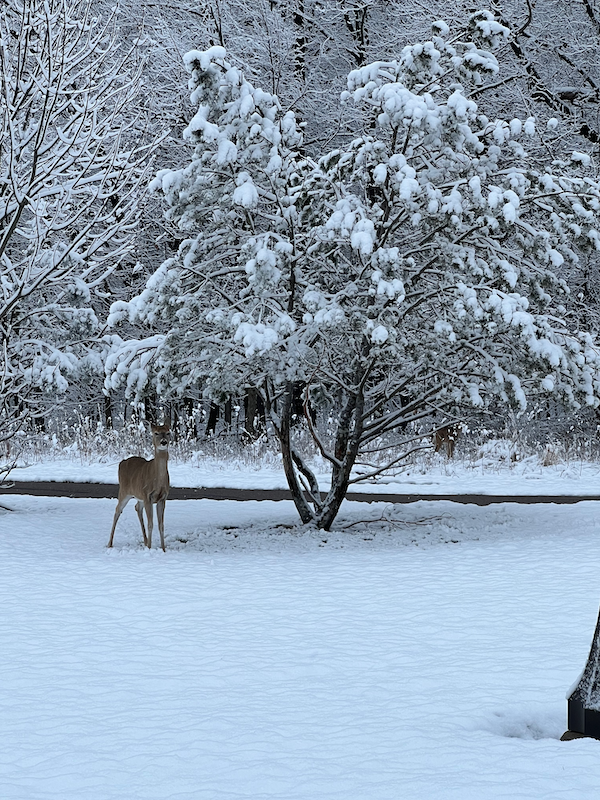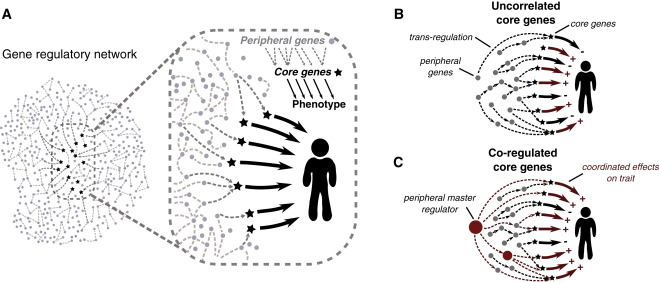Today is October 14, 2023. From last year to this year, we’ve seen too many tragedies.
Humanity is still leaping between civilization and barbarism.


Welcome to my personal website.
Today is October 14, 2023. From last year to this year, we’ve seen too many tragedies.
Humanity is still leaping between civilization and barbarism.


On this Sunday morning, I walked to campus for work. After flurries of snow, the woods and roads are covered in white. What a fairytale and tranquil scene! No painting can depict such sight!
“Go out, and look at the world in a different way!”



It is been five years since my last trip to San Diego for PAG meeting. What turbulent five years we had! Yet, the PAG meeting is always wonderful. I never felt disappointing in PAG. Turnout this year was not as many as in the past, but things have been changing towards a revival direction. Well, at least, I hope we could have a temporary peace.
For the leisure part, I wish I could have arrived two days earlier so that I could have arranged my personal actives better. Oh my, San Diego has the best SPA, hair salon, eatery, shopping centre in the US! Not mention the beach!
For the work part, I’ve learnt a great deal. I enjoyed every minute at the meeting. The only pity is that so many interesting talks and sections occur concurrently, also, I did not get chance to read all posters! Reading the journal publications can’t compare with listening to the lecture by the author or talking to the authors by their posters directly. Next time, I should have spent more time planning, selecting the sections/ talks from the programs in advance. And of course, I should have planned more time in first two days for posters! Many posters were taken down on the third day. Why are people so hurried back home? I haven’t got chance to read your posters!
For food, thankfully I made a good plan in advance, a better one than my schedules at the meeting! I enjoyed hot spot, Italian cuisine, Mexican cuisine. I learned a lesson that never fully trust the reviews. People’s taste are different. It is worth trying on your own.




Time flies! As we have already entered into a new year, it is time to think how to put the best foot forward in the new year. I have three projects in mind.
First, I want to explore the factors that impact gene expression profiles. When it comes to studies on gene expression, expression breadth and expression specificity are the two main subjects. What are the driving forces behind expression breadth and specificity? Are there convergent pattern of expression breadth and specificity across different species? Are expression breadth and specificity related to gene duplication, thus giving rise to dosage effect?
Second, I want to dissect complex traits using both SNPs and copy number variations (CNVs). Structure variations have been rarely used for dissecting quantitative traits in forest trees, yet it seems they exerted a similar impact on quantitative traits as nucleotide substitution variation. It would be interesting to employ both SNP and CNV variation in GWAS and see whether it can increase the test power.
Third, I want to compare the repeated sequences in different tree species. Repeated DNA have been called junk DNA historically, which has been proved wrong as evidences have shown repeated DNA may function as regulatory elements influencing coding genes expression. Gymnosperm trees differ from their angiosperm counterparts in the large size genome. Their repeats-filled genome evaded from downsizing by selection. Do the repeats between gymnosperm and angiosperm trees differ in type, distribution, and functional role? I think this would be one important aspect to explain the species radiation in flowering species.
On this Sunday morning, I enjoyed a life of peace and tranquility at home. It was drizzling outside. I left the window open to smell the refreshing scents from the newly grown grasses and trees in this spring. Nevertheless, my joyful mood was kind of interrupted by the article about Dr. Stephen Hawking’s last messages of warning for humanity. Most of them were delivered during his speeches a couple of years prior to his death on Mar 14, 2018. Let me share some of my views towards these messages.
With the year 2021 fast approaching, all of us earthians have to embrace the global new norms. Other than pandemic, humankind faces lots of other challenges. Let me jot down two of my severe concerns.
One is the misuse and abuse of personal data as well as the “too free” internet envrionment. It is not a secret that we are monitored and stalked by tech companies through apps, so we can be targeted by various commercial ads. How come if we are targeted for criminal and evil use? As stated in the book “Targeted”, Cambridge Analytica analyzed the posts and likes of Facebook users, then identified and targeted the group of swing people to achieve political goal. No adult would like to admit he or she has been brainwashed, yet it did happen without being noticed. Is there any way to restrict this target behaviour? Also, with the rapidly developed technology, do we have the technology to break in “deep web” and bitcoin-supported black market? In short, We can’t let apps shape the values of young generation, and we have to protect humankind from being divided and radicalized.
The other is the environmental crises. Wild fires in U.S., in Amazon, in Australia, in Siberia took turns to occupy the headline. Lots of animals died and lost their habitats, tons of carbons were emitted into the atmosphere, and global warming got increased. Québec just had its hottest November since weather record began. In the last August, “the last fully intact ice shelf in the Canadian Arctic has collapsed, losing more than 40 per cent of its area in just two days at the end of July”. Many Arctic animals lost their habitats, and doubtlessly, earth temperature will continue going up. Not to mention deforestation in Amazon rainforest, which was destroyed for farming and mining. We are losing biodiversity in the earth, something will never come back again. Can we pass on the beautiful scenery to our next generations so they can appreciate the mighty nature as we do? I am not sure.
Optimists say humans always have solutions to the pressing issues. Well, I sincerely wish the price tag of these solutions are not quite astounding.
“Nothing vast enters the life of mortals without a curse.” This is the opening remark of the Netflix documentary “The Social Dilemma”. Thanks to the frank speech by the Tech Company insiders. Their statements explain some of my long-term questions and clearly point out the doomed prospect we face in the coming decades. While we hail to every advancement linked to internet, AI, big data, there is an urgent need for us to think of the other side of this story and find out solutions to the danger.
I first learned about internet around 1998 in my home city Tianjin. Back then, computer and internet were not household devices. My father recognized the importance of World Wide Web. One afternoon, he showed me into a net bar and paid ten RMB to the admin staff and asked them to teach me some basic skills of using internet. Since then, I have witnessed the rapid growth of internet and expereinced the remarkable convenience brought by internet to human life.
Until one day, I began to notice something wrong with the internet. I clicked an ad of a backpack brand. In the next few months, I was bombarded with pop-up ads of this brand and some similar backpack brands. I realized I was likely stalked online. I am right. In the documentary, these gurus said clearly that each user’s any activity on the app is under surveillance, analyses, in doing so, similar promotion ads will be precisely targeting users. The BBC Tech article also talked about this AI-aided business model — AI can make you buy more things. https://www.bbc.com/news/technology-54522442 Simply put, Tech companies profit from analyzing and selling users’ information.
Sadly, history tells us when the technology grows too fast and regulation can not keep up, disaster occurs, like the atomic bomb in 1940s. The nuclear technology was used to produce weapons to take human lives and destroy our Mother Earth. There is a high correlation between the flourish of these tech companies with worsening mental health in youths. What’s worse, the political extremes grow quickly, too. Civial war? Dystopia? Hope not. Yet it needs these tech compnies to regulate their commercial behaviour and inevitably, sacrifice some commercial benefits. Will it work for capitalism world?
I was so inspired by a seminar talk from Dr. Jonathan Pritchard yesterday. The talk was about a new conceptual framework “omnigenic model”for dissection of complex traits.
Numerous GWAS showed many genes with small effects compose the architecture of complex traits, and big effect genes only contribute to small proportion of heritability. Where is the “missing heritability” ? They are from widely spread alleles of small effects, which are frequently under detected.
Dr. Pritchard’s group suggested a new framework to solve this question. Simply put, both core genes and peripheral genes contribute to the heritability of a complex trait. The main heritability comes from the trans-eQTL of peripheral genes. The core genes are the key driver of the trait, but they only account for small proportion of heritability. For disease prediction, we need to consider both core and peripheral genes; as for disease mechanism, the core genes, which reside in hub positions in the pathway and influence traits directly, may be more important.
Form evolutionary point of view, big effects genes are more frequently targets for natural selection, because they are easy to be “seen”; while small effects genes are drifting and under neutral selective pressure.

Figure. “Omnigenic model” from https://www.sciencedirect.com/science/article/pii/S0092867419304003
Now, the questions are: how to define core and peripheral genes? Is it possible to set up different threshold for considering these genes when dissecting the architecture of complex traits?
I’ve heard many times in the past of this quote,” Follow your heart, but do take your brain.” This quote always strikes a chord in me. Yesterday, I found some theories for it.
“Follow your heart” is the expression of romanticism, which can be nature, love, freedom, but oftentimes be uncontrolled, naive, uneducated.
“Take the brain” is the expression of modernity, which can be rationality, science and logic, but oftentimes be cold and heartless.
Being a mature human in this modern world, mixing and matching romanticism and modernity seems to be the best solution to survive and thrive, as we can benefit most when keeping a balance between both mindset. Say judge the world using modernity mind, and enrich the heart using romanticism mind.

Today, I was inspired by two articles. One describes adaptation benefits from gene loss through natural loss-of-function mutations https://www.sciencedirect.com/science/article/pii/S2590346220301310?via%3Dihub. The other describes plant autoimmunity https://nph.onlinelibrary.wiley.com/doi/10.1111/nph.16947.
The idea of adaptation through gene loss reminds me of the comparison between angiosperms and gymnosperms. One assumption attributed angiosperm’s rapid diversification in early evolution to their genome downsizing. Is it possible that gene loss promote the speciation radiation?
Plant autoimmunity could be generalized as deleterious epistasis (gene-gene interaction or protein-protein interaction).
Both articles seem to point: gene redundancy can be harmful to adaptation at some circumstances.